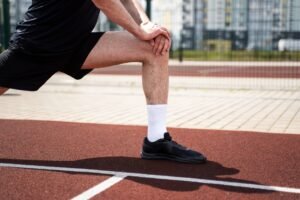A knee replacement is often a life-changing procedure, restoring mobility and alleviating chronic pain. However, for some, the journey doesn’t end as expected, and revision surgery becomes necessary. According to the American Joint Replacement Registry (AJRR), approximately 12,000 knee revision surgeries were performed in 2019—a testament to the complexity of this issue. Understanding why revisions are needed and what can be done is essential for anyone facing challenges with a knee replacement.
Why Do Knee Replacements Fail?
Knee replacements, while highly effective, are not immune to complications. Several factors can contribute to a failed knee replacement, ranging from mechanical wear to medical issues. Recognizing the signs early and taking appropriate action can make all the difference in restoring function and quality of life.
Key Reasons for Revision Surgery
1. Infection: A Serious but Manageable Concern
-
Cause: Infections can occur shortly after surgery or years later due to bacteria entering the bloodstream.
-
Effect: Symptoms include severe pain, swelling, redness, warmth, and fever. Infections are particularly challenging because bacteria adhere to metal implants, creating a protective biofilm that resists antibiotics.
-
Outcomes:
-
Early infections: Treated with a “washout” procedure where the joint is cleaned, a new liner is inserted, and antibiotics are administered.
-
Late infections: Require a two-stage process involving implant removal, placement of a temporary spacer, and extended antibiotic therapy before fitting a new implant.
-
2. Loosening: A Gradual Process of Wear and Tear
-
Cause: Over time, the bond between the implant and bone may weaken due to stress, improper initial fixation, or natural wear.
-
Effect: Persistent pain, swelling, and a sensation of instability, especially during initial movement after rest.
-
Outcomes: Revision surgery replaces or reinforces the loose components, improving stability and function.
3. Instability: Misalignment or Soft Tissue Issues
-
Cause: Misaligned components or stretched ligaments can destabilize the knee.
-
Effect: A feeling of the knee giving way, difficulty walking on uneven surfaces, and reduced confidence in mobility.
-
Outcomes: Surgeons may adjust or replace components to realign the knee and restore stability.
4. Polyethylene Wear: A Common Wear-and-Tear Issue
-
Cause: The plastic spacer between the thighbone and shinbone can degrade over time.
-
Effect: Instability, discomfort, and increased wear on other components of the knee replacement.
-
Outcomes: Modern materials have improved durability, but if wear occurs, replacing the liner can restore joint functionality.
5. Fractures Around the Implant
-
Cause: Trauma, such as falls, can lead to fractures near the knee replacement.
-
Effect: Fractures may loosen the implants, causing pain and limiting mobility.
-
Outcomes: Treatment involves repairing the fracture and, in some cases, replacing or adjusting the implants for stability.
6. Poor Fit of the Prosthetic
-
Cause: Improper sizing, alignment, or placement during the initial surgery.
-
Effect: Discomfort, pain, and restricted movement due to an ill-fitting prosthetic.
-
Outcomes: Revision surgery corrects the fit, improving the prosthetic’s function and alignment with your anatomy.
Therapeutic Edge
-
Stay Alert to Warning Signs:
-
Persistent pain, swelling, instability, or redness shouldn’t be ignored.
-
Monitor for symptoms like fever, which could indicate an infection.
-
-
Consult Your Healthcare Team:
-
Share your concerns with your surgeon. Detailed imaging and diagnostic tests can help identify the issue.
-
A physical therapist can offer additional insights into movement patterns and potential complications.
-
-
Consider a Second Opinion:
-
If you’re uncertain about your diagnosis or treatment plan, seeking another expert opinion can provide clarity and confidence in your next steps.
-
-
Understand Your Revision Options:
-
Treatment plans vary based on the underlying cause. Knowing your options empowers you to make informed decisions.
-
-
Follow Post-Surgery Protocols:
-
Adhering to rehabilitation and activity recommendations is crucial for preventing further complications and optimizing outcomes.
-









